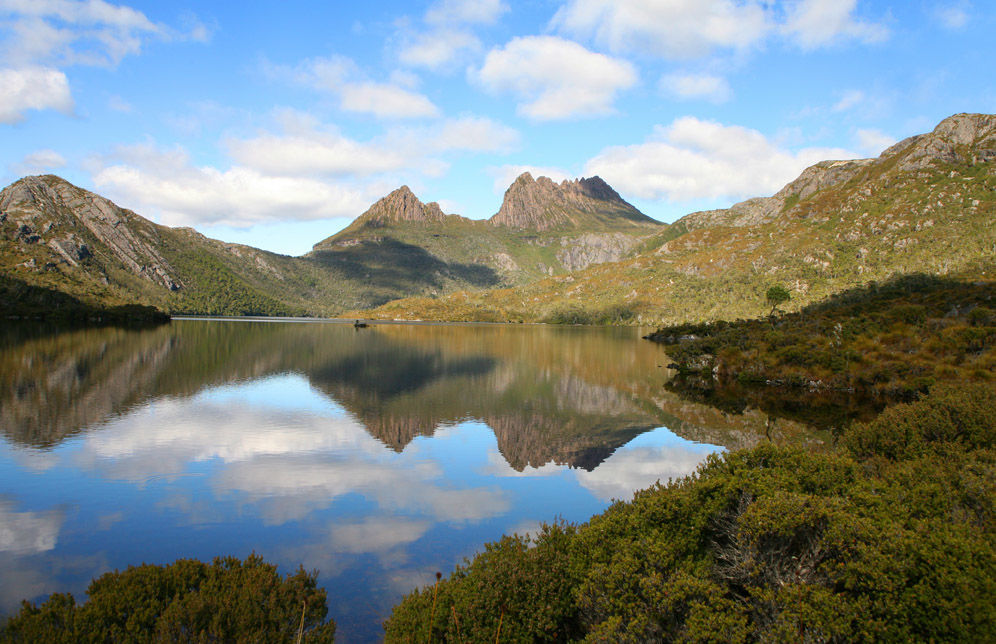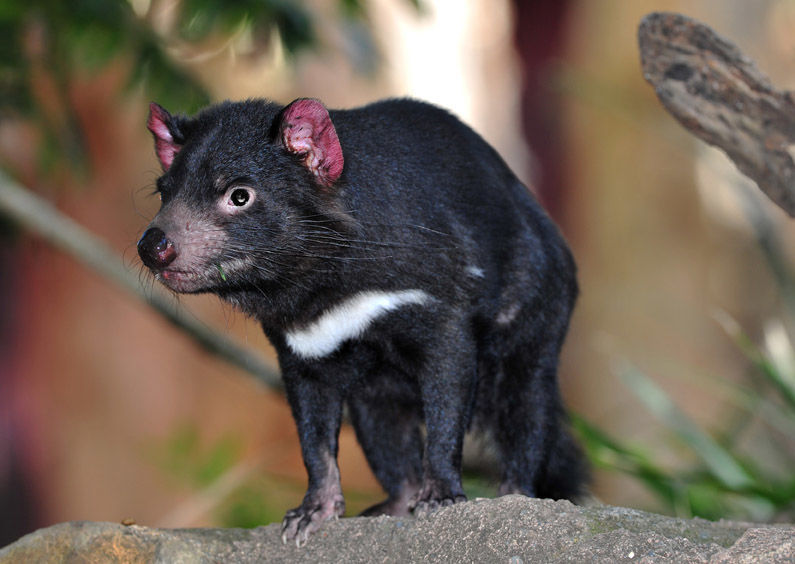Toll Free: 800.328.8368
Phone: 512.328.5221
Grand Australia: Tasmania Extension
Upcoming Dates
October 21 - 27, 2026
Departs
Launceston
Returns
Hobart
Tour Limit
8

Cradle Mountain and Dove Lake, Tasmania © Jacqui Martin/Shutterstock
In this easy and relaxed 7-day exploration of Australia’s iconic southern wilderness, Tasmania, we aim to find all 12 of Tasmania's endemic birds and many other signature species along the way. We will enjoy untainted wilderness, sweeping coastlines pounded by the Southern Ocean, breathtaking mountain scenery, ancient rainforests of Gondwana, and a string of exotic egg-laying and pouched mammals from a world of the past. We will even dine with the enigmatic Tasmanian Devil in a remote wilderness resort.
Tasmania is a lush, green, and mountainous island drenched by regular rains and cooled by seas that roar in over the Southern Ocean from the Antarctic. Lying 150 miles south of the Australian mainland, it was once connected, but was isolated about 10,000 years ago when sea levels rose at the end of the Ice Age. Now it is one of the world’s most pristine places, with almost 45% of the land protected in World Heritage Areas, national parks, and reserves. As a result of its isolation, Tasmania is a world of the past that supports a number of exciting endemic birds and provides a safe haven for many of Australia’s rarest birds and mammals. Tasmania was once a part of the prehistoric supercontinent of Gondwana, and that legacy remains on show. The rugged Central Highlands are formed by massive dolerite intrusions from Jurassic volcanoes, since weathered and shaped but not defeated by long periods of glaciation. Ancient and majestic forests, dripping with mosses and ferns, show the unique signature of Gondwanic plant families such as the Proteaceae (e.g. Banksia species), the southern beeches (Nothofagus species), and the towering Gondwana pines (Auricariaceae). The bizarre mammals either lay eggs (the monotremes) or carry their infant young in pouches (the marsupials). The rivers run clean and swift, and the shores are pounded by surf and spray. The air is clean and fresh, and the climate is temperate with four distinct seasons.
Our tour is timed for the height of spring when the weather is mild and fair and the birds are at their peak. We begin in Launceston, exploring the Tamar River wetlands in search of ducks, Cape Barren Goose, Tasmanian Nativehen (a large flightless rail) and more. Making our way westwards, we will look for more of Tasmania’s endemic birds like Green Rosella, Yellow-throated Honeyeater, and Dusky Robin, and we may also find the bizarre egg-laying mammal, the “duck-billed” Platypus, on the first day. Late in the day we will journey to the lost valley of Loongana where we have a dinner date with the Devil—The Tasmanian Devil, that is. Overnight, we will stay in fully appointed, but wonderfully rustic log cabins at the Mountain Valley Wilderness Resort. As night falls, the wilderness comes alive as Tasmanian Pademelons, Common Brushtail Possums, and maybe even Tasmanian Devils venture onto our verandahs for their evening meal, kindly coaxed there by our hosts, an experience you will never forget.
On day two we will head to the heart of the Tasmanian Alps, the iconic Cradle Mountain-Lake St Clair National Park. The serene beauty of this mountain wilderness is nothing short of transfixing. We will bird the ancient Gondwanic forests and also the highland open country, seeking more endemic and signature species like the Yellow-tailed Black Cockatoo, the Black Currawong, the elusive Scrubtit, Striated Fieldwren, and the most beautiful trio of Australian Robins: Flame, Scarlet, and Pink. In the quiet afternoon we may find the enigmatic Short-beaked Echidna probing for ants and some Common Wombats grazing in the grassy alpine meadows. The next day we will explore the Alps further, before an afternoon visit to the shores of Bass Strait in search of shorebirds, terns, and seabirds. After dusk, we will watch the Little Penguins come ashore from a day’s fishing to feed their chicks.
With the mountains thoroughly explored, we’ll take a scenic drive through the Central Highlands towards Hobart and southeastern Tasmania, stopping at selected spots to look for Wedge-tailed Eagle, Musk Duck, Freckled Duck, Hoary-headed Grebe, Musk Lorikeet and more. At our hotel in Hobart’s historical waterfront, home for three nights, we will find panoramic views, fine restaurants, and also some excellent birds like Black-faced Cormorant, Pacific Gulls, and Kelp Gulls.
On day five we will cross by ferry to the pristine Bruny Island in search of the rare, endemic Forty-spotted Pardalote, the most migratory of all the parrots—the critically endangered Swift Parrot, and a host of Tasmania’s other endemic and signature birds. We’ll also scour the coastline for Pacific Gull, Hooded Plover, and Pied and Sooty oystercatchers, and hopefully glimpse a White-capped Albatross offshore. We may even encounter a rare population of albino wallabies or a white morph Gray Goshawk.
On our last day we will take a relaxed tour of the Hobart area, visiting dramatic lookouts, forest reserves, wetlands, and historic sites, with a last opportunity to find any target birds we may have missed so far. In the evening we will enjoy a sumptuous farewell dinner of world-famous Tasmanian produce and fresh seafood. The next morning we are in easy reach of the Hobart Airport for our return flight to Melbourne and connecting flights home.
Very good accommodation, with 3 nights in international hotels, 2 nights in luxurious cabins, and 1 night in fully-equipped log cabins in a remote valley where we will seek the iconic Tasmanian Devil; delicious local food, fresh produce, and fresh seafood; easy roads and comfortable vehicles; easy to moderate terrain; typically cool and overcast with occasional showers; can be cold and blustery, yet often sunny and warm; snow is possible at Cradle Mountain.

Tasmanian Devil © worldswildlifewonders/Shutterstock
Route Map
Tour Leaders
Field Reports
Available by request; please contact the VENT office.
Connecting Tours
Operations Manager

Erik
Lindqvist
Questions? Contact the Operations Manager or call 800.328.8368 or 512.328.5221



